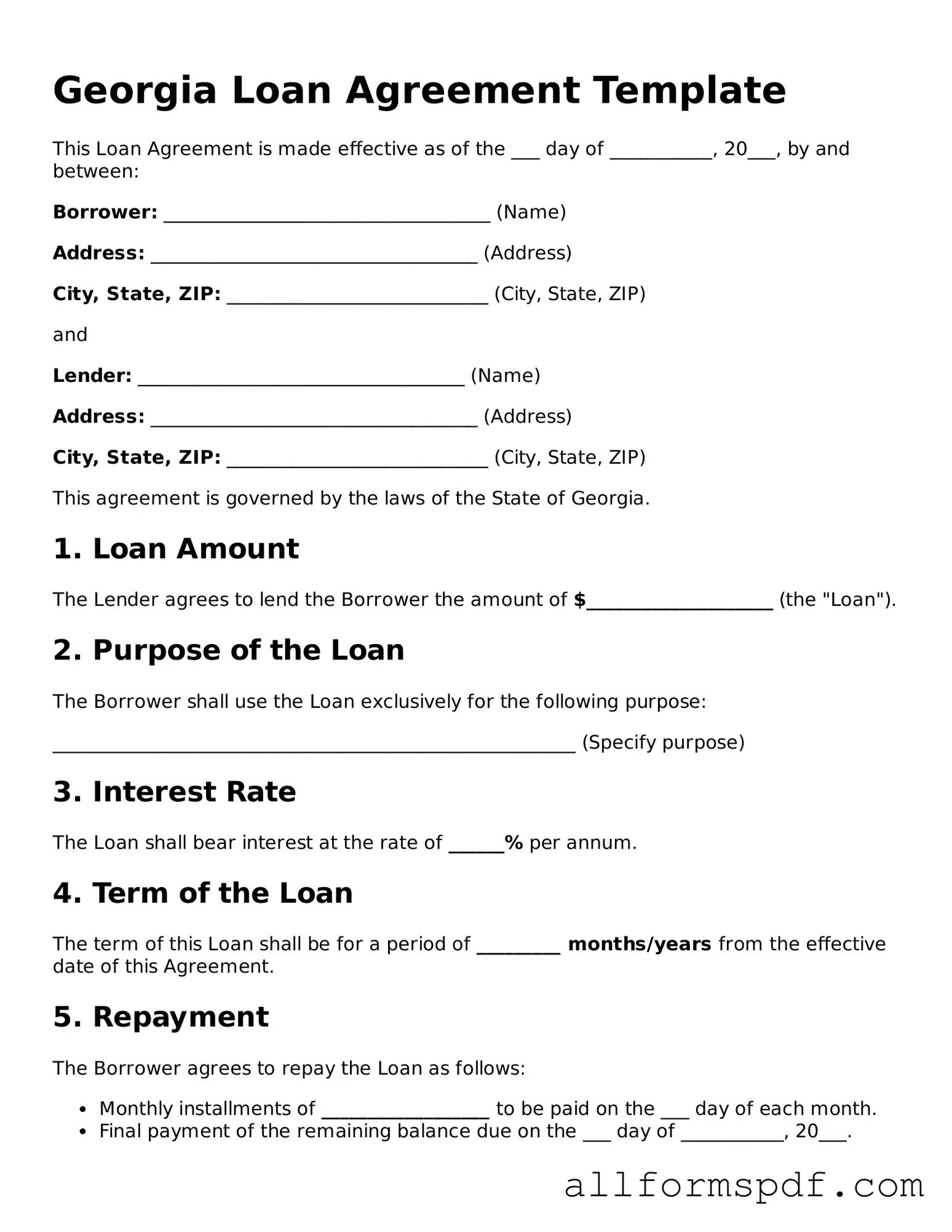Fillable Loan Agreement Form for Georgia
A Georgia Loan Agreement form is a legal document that outlines the terms and conditions of a loan between a lender and a borrower. This form serves to protect the interests of both parties by clearly detailing the repayment schedule, interest rates, and any collateral involved. Understanding this agreement is crucial for ensuring a smooth borrowing experience and avoiding potential disputes.
Create My Loan Agreement Now
